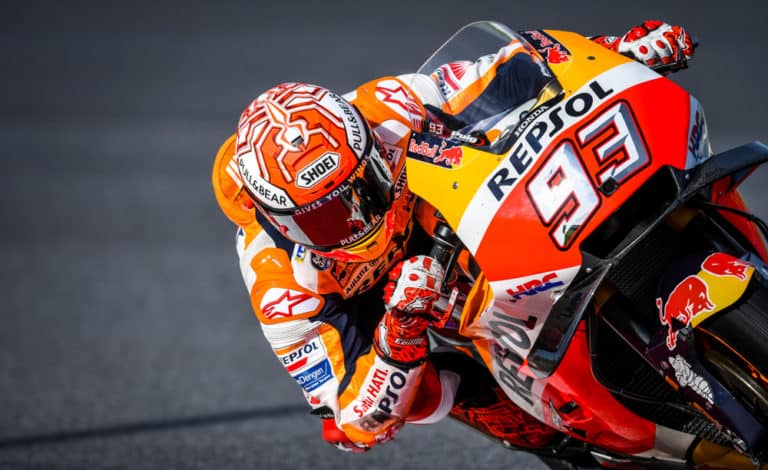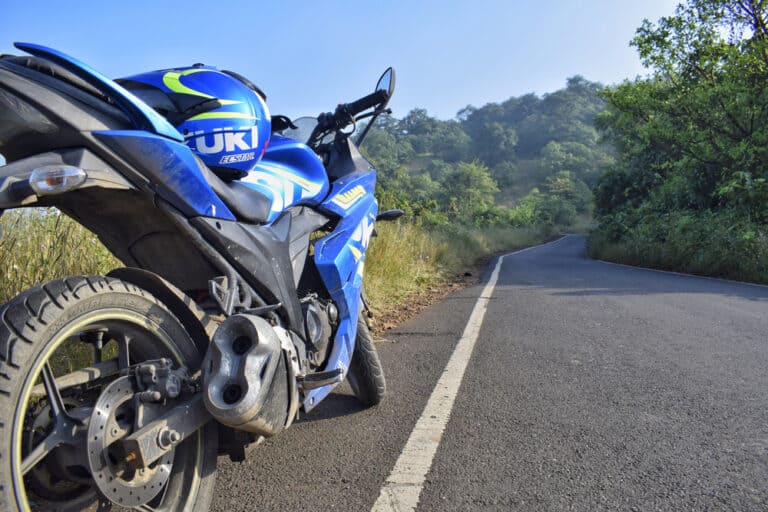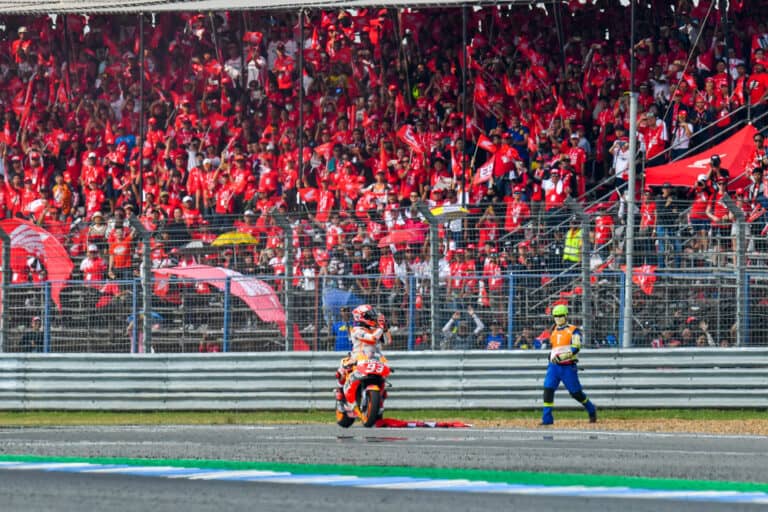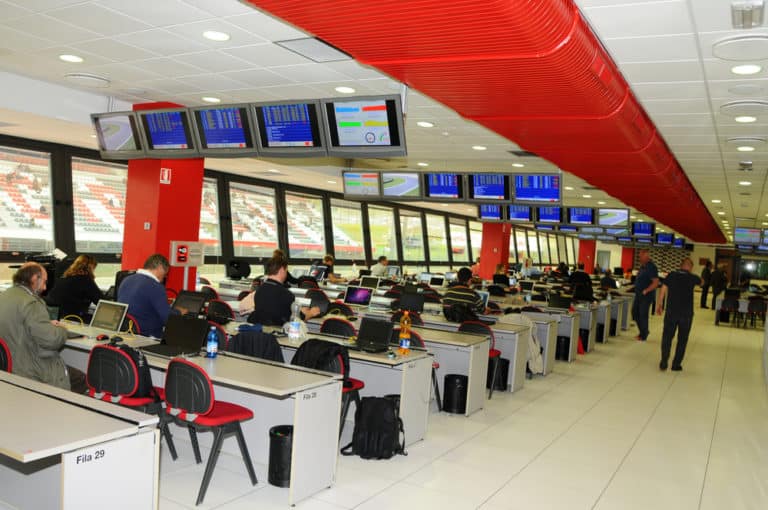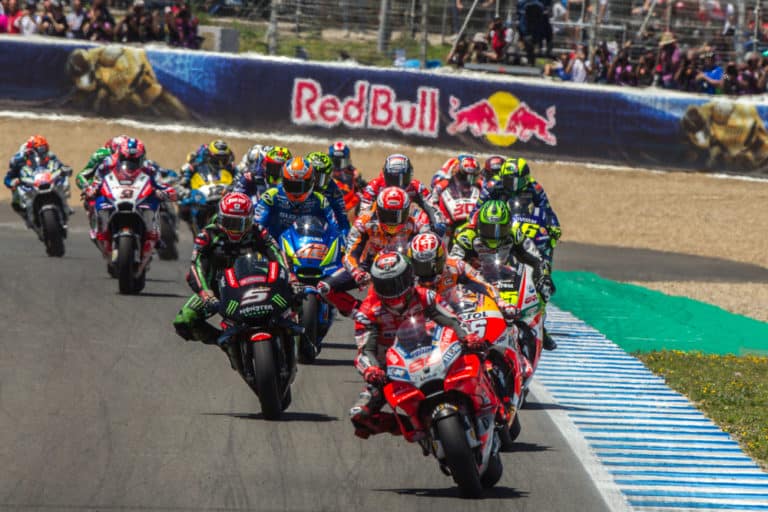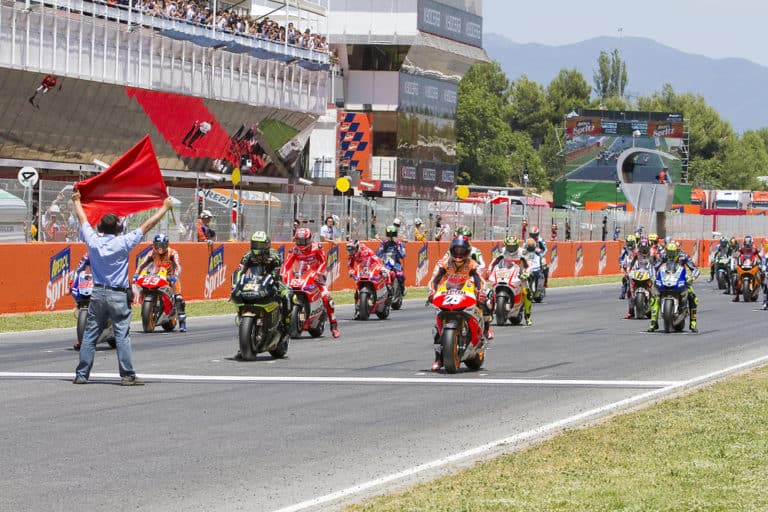If you consider yourself a MotoGP fan, you haven’t lived until you see a MotoGP bike blaze past you in a blur of glory! The experience sticks with me even after nine years, and it can be pretty addictive. So, how fast do MotoGP bikes go on straights and through corners?
MotoGP bikes go up to 225 mph (362.4 kph) around a track on a straight and 52 – 86 mph (85 – 140 kph) through corners. Riders must lean 58 – 62 degrees to take corners comfortably, and their speeds vary when they optimize their bikes for the track layout to tackle more or fewer corners.
Racing a MotoGP bike at the highest level is a fine art that demands the rider’s full attention. Let’s explore what affects the top speed of MotoGP bikes and the role of riders in maintaining the speed required to take the leading position and win a race.
How Fast Do MotoGP Bikes Go?
For those of us who ride, few things can give the same adrenaline rush as the sound of a roaring engine as our bikes climb in speed. MotoGP bikes are on another level entirely, having been optimized for top speed or cornering depending on the track layout.
Regarding long straights, Jorge Martin set the record in 2022 when he and his Pramac Ducati pushed 225.9 mph (363.6 kph) at Mugello during the Italian Grand Prix.
The same MotoGP bike can have varying speeds for multiple tracks because it gets optimized so the rider can achieve the last gear near the end of the longest straight.
MotoGP bikes have around 290 brake horsepower (bhp). If you consider superbikes with 200 bhp, they will hit their threshold at 200 mph, but because of diminishing returns of extra power, an additional 90 bhp will likely generate around 30 – 40 mph.
Considering everything, you may get 240 mph (386 kph) on a superbike. MotoGP bikes can get 225.9 mph (363.6 kph) on a track, which means there’s a high probability of them achieving at least 235 mph (378 kph).
How Fast Do MotoGP Riders Take Corners?
MotoGP riders go 68 – 86 mph (110 – 140 kph) around regular corners and 52 – 65 mph (85 – 105 kph) around sharp corners.
Cornering plays a significant role in MotoGP, helping riders to inch closer to or slingshot into the leading position. Corners can vary in sharpness and require riders to adjust their speed and leaning angle between 58 – 62 degrees.
Of course, MotoGP bikes are also adjustable to better handle cornering. For instance, when Jorge Lorenzo raced for Yamaha, he achieved twice the cornering speed of other racers; what Yamaha lacked in top speed, they made up for in cornering advantage.
Which Factors Influence MotoGP Speeds?
Cornering, wheelspin, accelerating & braking, torque & power, tires, and rider experience all contribute to MotoGP speeds.
What is the single most important contributing factor that determines MotoGP speeds? It’s the rider. Without them, a MotoGP bike is nothing more than an impressive collection of mechanical ingenious.
Riders achieve incredible race-winning speeds on the track by taming their iron horse and mastering the following aspects:
- Cornering with correct velocity.
- Avoiding unnecessary wheelspin.
- Using proper acceleration and braking techniques.
- Well-adjusted traction control
- A Rider’s ability to slingshot out of corners.
- The rider’s overall skill in aerodynamics to maintain stability during high speeds.
- Transitioning from one side to another.
- The engine characteristics of the bike, like power and torque.
- How riders use their tires to maximize lean while maintaining tire wear.
Can Other Bikes Go Around Tracks Faster Than MotoGP?
There are no other bikes that rival the track speed of MotoGP bikes. In truth, MotoGP bikes may look like a motorcycle and perform like a superbike, but they more accurately belong to the prototype category. They’re awe-inspiring experiments meant to blaze around a track at maximum speed.
The only bikes that can compete with MotoGP bikes are other MotoGP bikes. Since they receive copious amounts of funding, there is little to no chance anyone can build a bike that competes with a MotoGP bike.
How Are MotoGP Bikes Different From Normal Ones?
If we start right at the beginning, you’ll notice a MotoGP bike does not have a starter, battery, alternator, kick start, or kickstand.
You need to start MotoGP bikes manually by using a starting block. They follow the same concept as jump-starting a motorcycle or car. They lift the rear wheel and place them on the rollers on the starting block. The rollers rotate electronically, at which point the rider puts the bike into gear to start the bike.
As a result, the bike will also stall when it doesn’t move, so they don’t stop during a race unless there is an emergency fault with the bike. Furthermore, it also means riders can’t continue the race after a fall.
Since MotoGP bikes only take off once at the start of a race, they have limited torque, and instead, all the power lies in the mid-to-top range of the bike.
Because MotoGP bikes receive adjustments for a specific track, their suspension will feel much stiffer than regular bikes. They only perform when the rider pushes them and therefore require tremendous skill to ride effectively.
The tires are generally slick and require the rider to put a load on them to get them to the right temperature to perform. Braking is challenging because the carbon must heat up enough for them to work at its best.
Lastly, MotoGP bikes have a mind-boggling 270 – 290 bhp that makes them difficult to handle, even for racers from other series who attempt to ride a MotoGP bike.
Do MotoGP Riders Go Faster Than Formula One Drivers?
MotoGP bikes cover short distances faster while Formula One cars are quicker long distances.
MotoGP bikes have an almost insane weight-to-power ratio, boasting up to 290 bhp, and Grand Prix 2022 regulations require them to weigh a minimum of 346 lbs (157 kgs). Consequently, they have no rivals when covering short distances – like drag races.
On the other spectrum, Formula One cars dominate long distances because they have superior downforce & stability thanks to having four tires instead of two. It allows them a larger contact area, which helps them easily maintain top speeds through corners.
Considering the Sepang International Circuit in Malaysia, the MotoGP record stands at 1:58.131 while the F1 record sits comfortably at 1:34.080
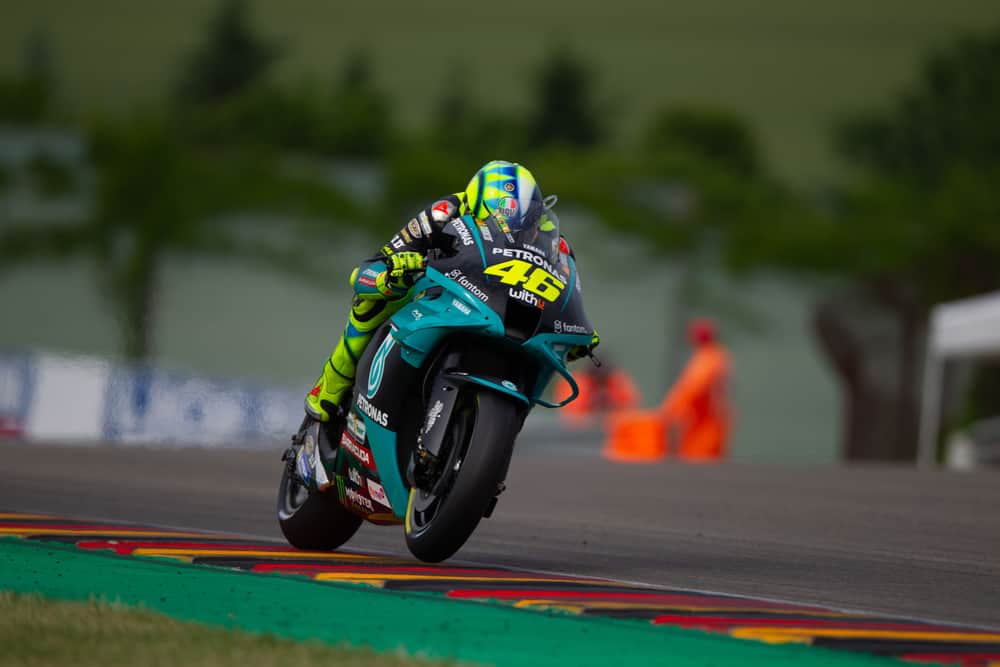
Conclusion
MotoGP bikes go up to 225.9 mph (363.6 kph) on straights and take typical corners at 68 – 86 mph (110 – 140 kph) and sharp turns at 52 – 65 mph (85 – 110 kph). The rider is primarily responsible for pushing a MotoGP bike to its extreme and bringing out its full capabilities.
Sources
- https://www.quora.com/How-fast-do-MotoGP-bikes-go-around-corners
- https://www.quora.com/Which-is-faster-F1-car-or-Moto-GP-motorcycle-Why
- https://www.quora.com/How-fast-is-a-MotoGP-bike
- https://www.quora.com/How-fast-could-a-MotoGP-bike-go-in-a-straight-line
- https://www.autosport.com/f1/news/how-fast-is-an-f1-car-top-speeds-of-f1-indycar-motogp-and-more-4980734/4980734/

